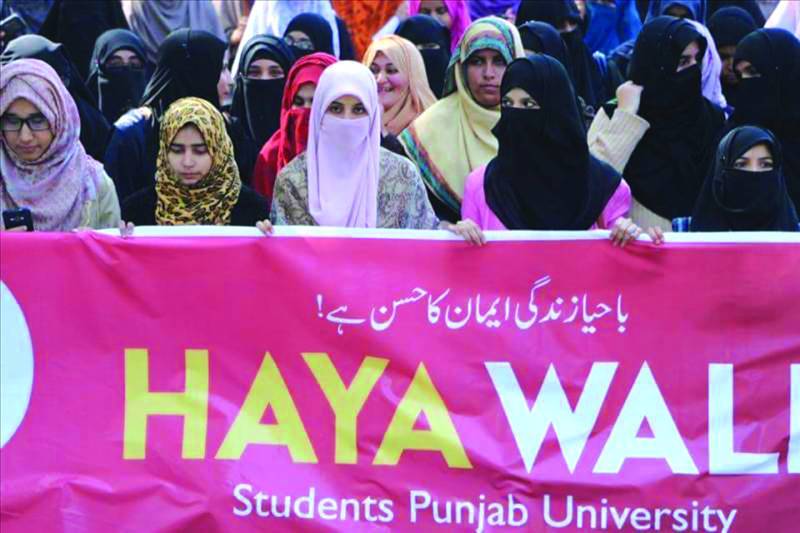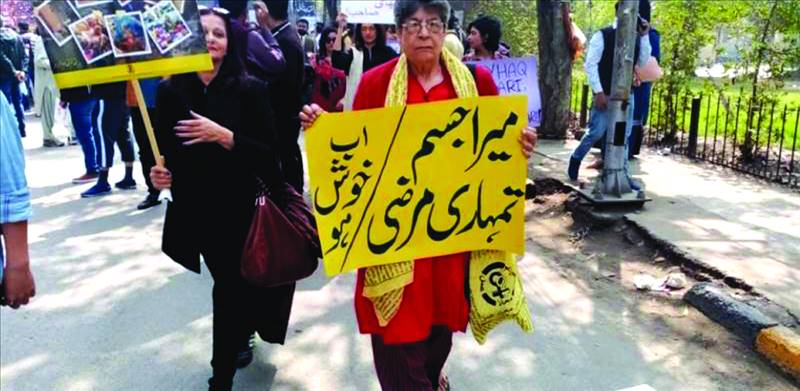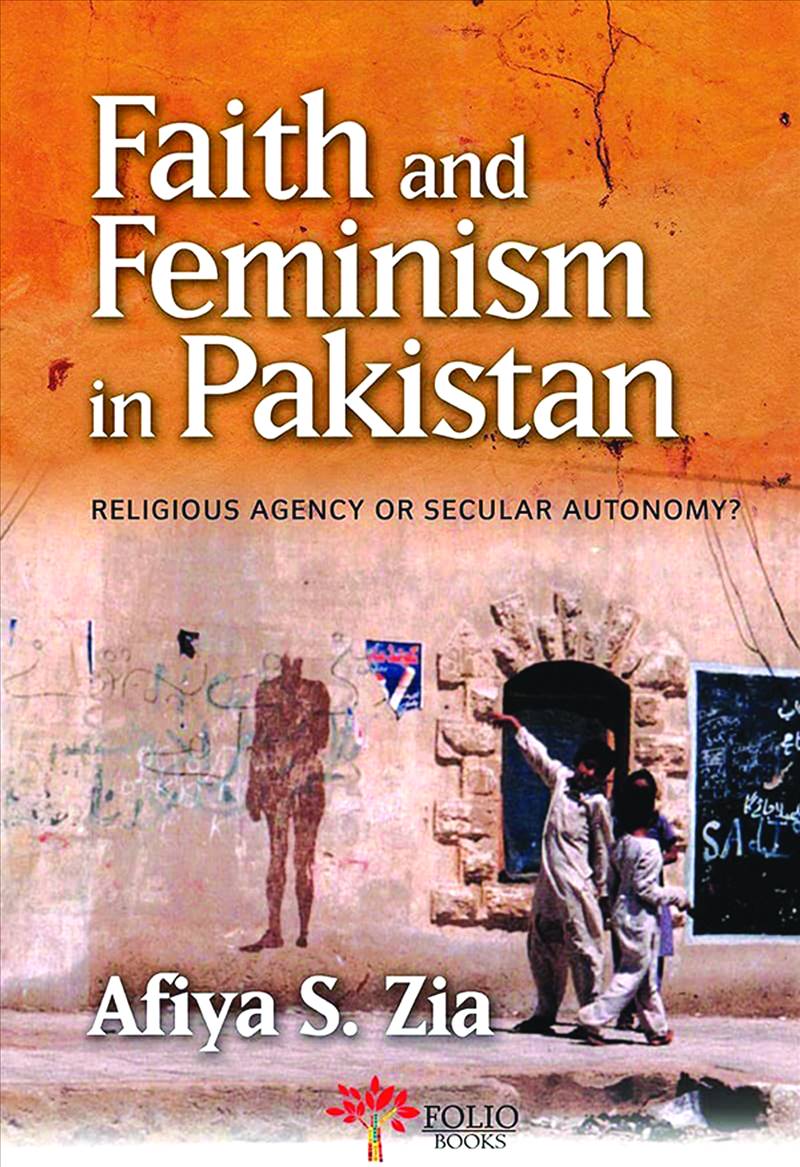
Pakistan as an Islamic Republic has often been at the helm of curbing and restricting women’s basic freedoms. When it comes to the rudimentary provision of protection and justice, Pakistan, its government and the public figures have always failed us – from the glaring repercussions of the Hudood Ordinance to honour killings, or the recent incident of the Lahore motorway gang rape which has raised concern about women’s safety in the country. The incident sparked nationwide protests, with demands that included: resignation of the publicly callous senior police official, i.e. the CCPO, putting an end to the virginity test, structural reforms and accountability for police and making public spaces safe for “women, trans and non-binary people.” But what the survivor and the protesters got was a barrage of endless misogyny used to justify how the police reacted during the situation. What’s more astounding is the kind of response it has elicited from the state’s leadership and the religious leaders.
Consider, for instance, the country’s premier’s statement when asked about the incident in an interview. Prime Minister Imran Khan framed the issue as the distortion of “true” Islamic/Pakistani ethos and considered the weakening of the family system to cause an increase in such crimes. “World history tells when you increase fahashi (vulgarity) in the society, two things happen: sex crimes increase and the family system breaks down,” further substantiating by giving an example of the increase in divorce rate in England along with an increase in sex crimes. Consider this statement by the CCPO who was again seen reiterating his “stance” on the incident stating that the victim “was travelling late at night without her husband’s permission.” The police further stated that the area fell out of its jurisdiction to respond to the victim’s repeated call for help.
When it came to the motorway incident, Maulana Tariq Jameel, who earlier blamed a global pandemic on women’s “immodesty and clothing”, this time shifted the onus of rising “obscenity” on co-educational institutes and weak morals which ultimately according to him lead to such crimes. Another instance can also be looked into. Days before the incident, Siraj ul Haq’s party had put up banners across various areas of Lahore which said “Haya aur Hijab Tahafuz bhi aur rehmat bhi (Modesty and Hijab - Protection and Blessing). The general message being that only a “virtuous” woman automatically qualified for protection.

In other efforts, the Prime Minister in his attempts in an effort to curtail the rising immorality, banned Tiktok and Tinder.
Pakistan since the last elections has seen a surge in statements and policies which show the overwhelming zeal of the incumbent party to project Pakistan as a quasi-moderate and progressive yet Islamic state. In doing so it has failed in providing women the requisite protection that a state needs to give. Instead, the ruling leadership has focused on limiting the kind of “content” that is being aired on television – banning shows which stand against the very “essence” of the Islamic republic. PTI’s stress on morphing an already highly religious state into Riyasat-e-Madinah perpetuates its need to control the masses through the politics of religion while ignoring the identity that class gives to the various segments of society. The political urge to use the female body as a site that the state can subdue and use as a symbol of piety and virtue exhibiting religious and national (Islamic/Pakistani) characteristics has carried an immense appeal in upper and middle class strata.
Afiya S. Zia in her essay “Politics of Piety” has discussed the role of the First Lady and her decision to observe a full purdah/veil. Zia in her essay argues that the decision of the First Lady itself is a political choice, stating, “Under Imran Khan’s ‘on the same page’ relations with the military and his purported vision of turning Pakistan into a Riyasat-e-Medina, the Muslim woman-subject is conceived as one who is a pious welfare-recipient and not an empowered or autonomous one such as, (the late) human rights champion, Asma Jahangir, who was a nemesis to his political career.”

Afiya Zia’s work on developing the notions and scholarship on secular feminism instead of Islamic feminism helps explain the underlying biases that came to attention after the recent rape incident. Her work Faith and Feminism in Pakistan attributed the conscious and subconscious decision of Pakistan’s military leadership (Zia-ul-Haq and then Musharraf) to use either extreme religion or moderate Islamic version of Pakistan – subsequently using the female body and autonomy over it as a tool to reach out to the public, giving them a separate and an apparently diverse image of a modern Pakistani woman. She further argues how the post-secular scholarship after 9/11 induced a religious-based narrative internationally and how it consequentially accommodated women with religious identities. But in doing so it instead denied the same space and liberty to secular/liberal Muslim women (of Third World and Islamic states).
A highly politicized, state-endorsed, Islamic narrative on female autonomy cuts across the actual struggle of secular/liberal feminist groups and the class divide that separates them and instead gives them a generic, basic outlook that is as restrictive as it is fickle.
The motorway incident has resurfaced the deep schism and biases that lie in Pakistani society. It highlights even officials’ perceived difference between a “modest” and a “liberal” woman. So, the CCPO’s statement showing how the state has failed to protect women.
Perhaps at the core of the problem is the desire to see a modern, progressive Pakistani woman who would not be independent in changing the debate about herself but would dutifully fall in line behind a narrative of what distinguishes a “good” woman from a “bad” one.
Consider, for instance, the country’s premier’s statement when asked about the incident in an interview. Prime Minister Imran Khan framed the issue as the distortion of “true” Islamic/Pakistani ethos and considered the weakening of the family system to cause an increase in such crimes. “World history tells when you increase fahashi (vulgarity) in the society, two things happen: sex crimes increase and the family system breaks down,” further substantiating by giving an example of the increase in divorce rate in England along with an increase in sex crimes. Consider this statement by the CCPO who was again seen reiterating his “stance” on the incident stating that the victim “was travelling late at night without her husband’s permission.” The police further stated that the area fell out of its jurisdiction to respond to the victim’s repeated call for help.
When it came to the motorway incident, Maulana Tariq Jameel, who earlier blamed a global pandemic on women’s “immodesty and clothing”, this time shifted the onus of rising “obscenity” on co-educational institutes and weak morals which ultimately according to him lead to such crimes. Another instance can also be looked into. Days before the incident, Siraj ul Haq’s party had put up banners across various areas of Lahore which said “Haya aur Hijab Tahafuz bhi aur rehmat bhi (Modesty and Hijab - Protection and Blessing). The general message being that only a “virtuous” woman automatically qualified for protection.

In other efforts, the Prime Minister in his attempts in an effort to curtail the rising immorality, banned Tiktok and Tinder.
Pakistan since the last elections has seen a surge in statements and policies which show the overwhelming zeal of the incumbent party to project Pakistan as a quasi-moderate and progressive yet Islamic state. In doing so it has failed in providing women the requisite protection that a state needs to give. Instead, the ruling leadership has focused on limiting the kind of “content” that is being aired on television – banning shows which stand against the very “essence” of the Islamic republic. PTI’s stress on morphing an already highly religious state into Riyasat-e-Madinah perpetuates its need to control the masses through the politics of religion while ignoring the identity that class gives to the various segments of society. The political urge to use the female body as a site that the state can subdue and use as a symbol of piety and virtue exhibiting religious and national (Islamic/Pakistani) characteristics has carried an immense appeal in upper and middle class strata.
Afiya S. Zia in her essay “Politics of Piety” has discussed the role of the First Lady and her decision to observe a full purdah/veil. Zia in her essay argues that the decision of the First Lady itself is a political choice, stating, “Under Imran Khan’s ‘on the same page’ relations with the military and his purported vision of turning Pakistan into a Riyasat-e-Medina, the Muslim woman-subject is conceived as one who is a pious welfare-recipient and not an empowered or autonomous one such as, (the late) human rights champion, Asma Jahangir, who was a nemesis to his political career.”

Afiya Zia’s work on developing the notions and scholarship on secular feminism instead of Islamic feminism helps explain the underlying biases that came to attention after the recent rape incident. Her work Faith and Feminism in Pakistan attributed the conscious and subconscious decision of Pakistan’s military leadership (Zia-ul-Haq and then Musharraf) to use either extreme religion or moderate Islamic version of Pakistan – subsequently using the female body and autonomy over it as a tool to reach out to the public, giving them a separate and an apparently diverse image of a modern Pakistani woman. She further argues how the post-secular scholarship after 9/11 induced a religious-based narrative internationally and how it consequentially accommodated women with religious identities. But in doing so it instead denied the same space and liberty to secular/liberal Muslim women (of Third World and Islamic states).
A highly politicized, state-endorsed, Islamic narrative on female autonomy cuts across the actual struggle of secular/liberal feminist groups and the class divide that separates them and instead gives them a generic, basic outlook that is as restrictive as it is fickle.
The motorway incident has resurfaced the deep schism and biases that lie in Pakistani society. It highlights even officials’ perceived difference between a “modest” and a “liberal” woman. So, the CCPO’s statement showing how the state has failed to protect women.
Perhaps at the core of the problem is the desire to see a modern, progressive Pakistani woman who would not be independent in changing the debate about herself but would dutifully fall in line behind a narrative of what distinguishes a “good” woman from a “bad” one.

